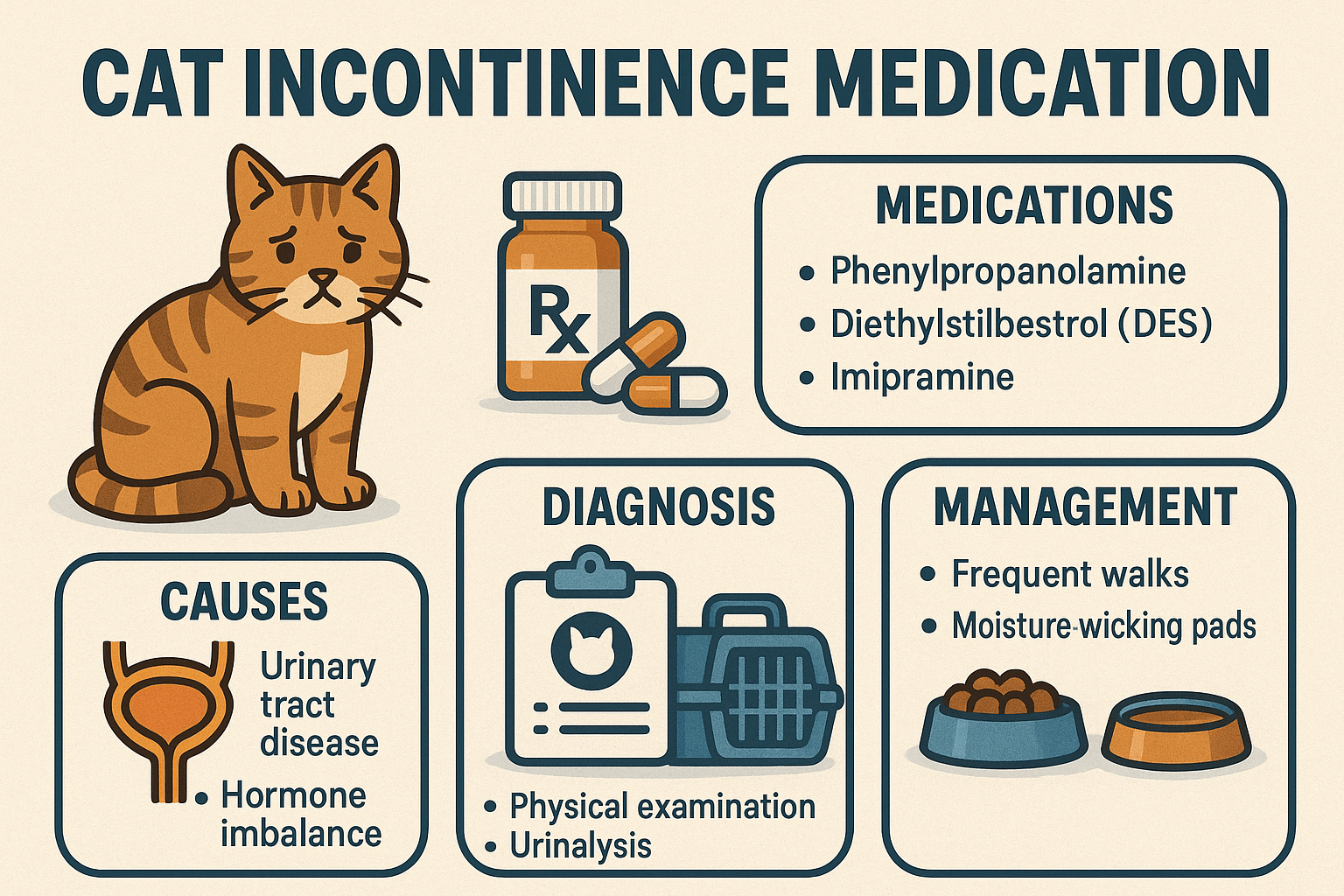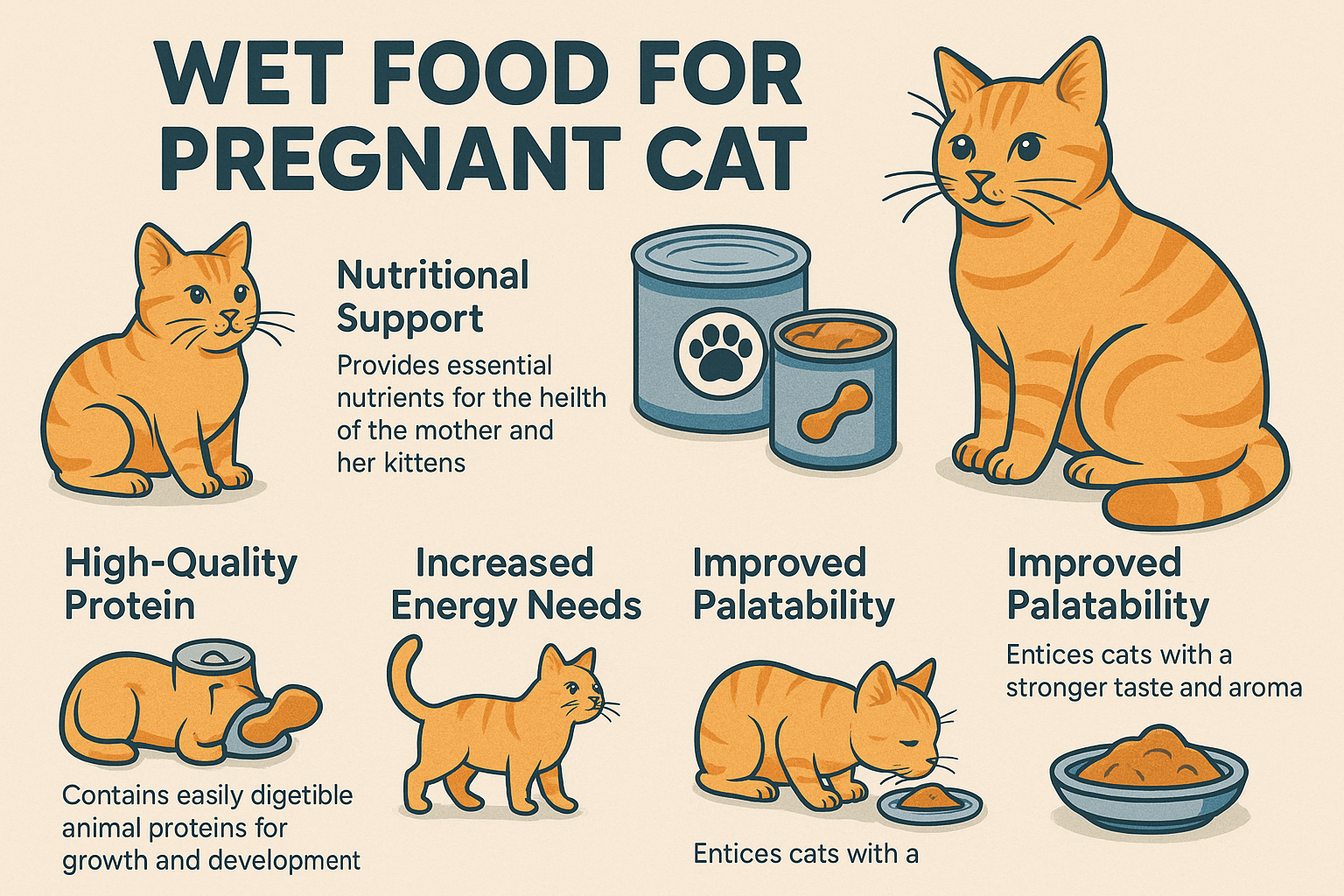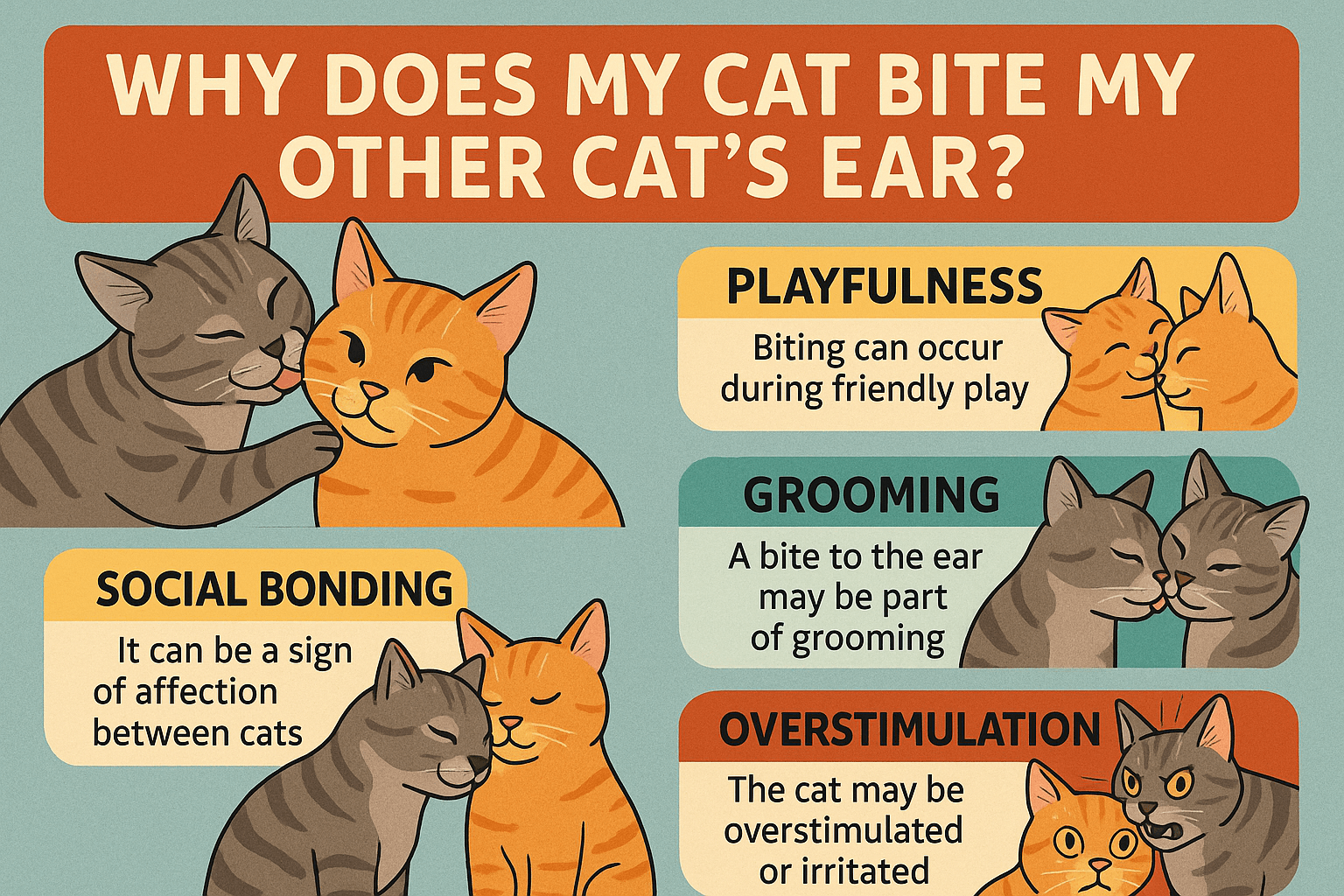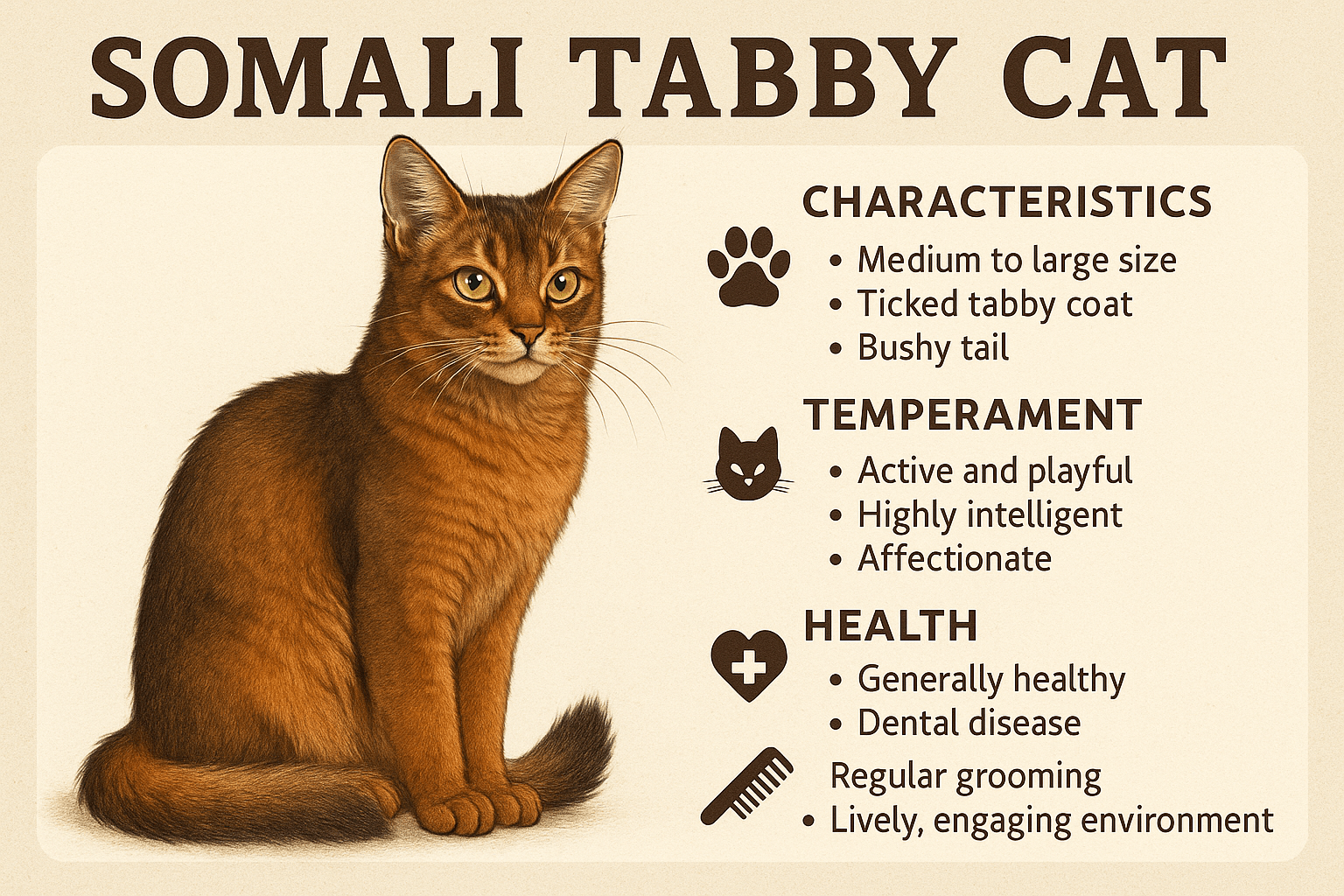Understanding Cat Incontinence Medication
Cat incontinence is a condition that can be distressing for both pets and their owners. While it’s not as common as other health issues, it can significantly impact your cat’s quality of life if left untreated. Incontinence in cats can stem from various causes, including urinary tract infections, bladder stones, hormonal imbalances, or neurological issues. Fortunately, there are effective medications and treatments available to manage this condition. This blog post will explore the role of cat incontinence medication, how it works, and what you need to know to help your feline friend regain comfort and confidence.
Common Causes of Cat Incontinence
Before diving into medications, it’s important to understand the underlying causes of incontinence in cats. Identifying the root cause is crucial for determining the most effective treatment plan.
Urinary Tract Infections (UTIs):
UTIs can irritate the bladder and lead to involuntary urine leakage. These infections often require antibiotics alongside incontinence medication.Bladder Stones or Crystals:
Mineral deposits in the bladder can obstruct urine flow, causing incontinence. Surgical removal or dietary changes may be necessary.Hormonal Imbalances:
Spayed female cats are prone to hormone-related incontinence due to reduced estrogen levels. Hormone therapies are sometimes prescribed.Neurological Disorders:
Conditions affecting the spinal cord or nerves can disrupt bladder control, requiring specialized treatment.Age-Related Weakness:
Older cats may experience weakened bladder muscles, leading to accidents. Medications can help strengthen these muscles over time.
By pinpointing the cause of incontinence, veterinarians can tailor treatments to address your cat’s specific needs effectively.
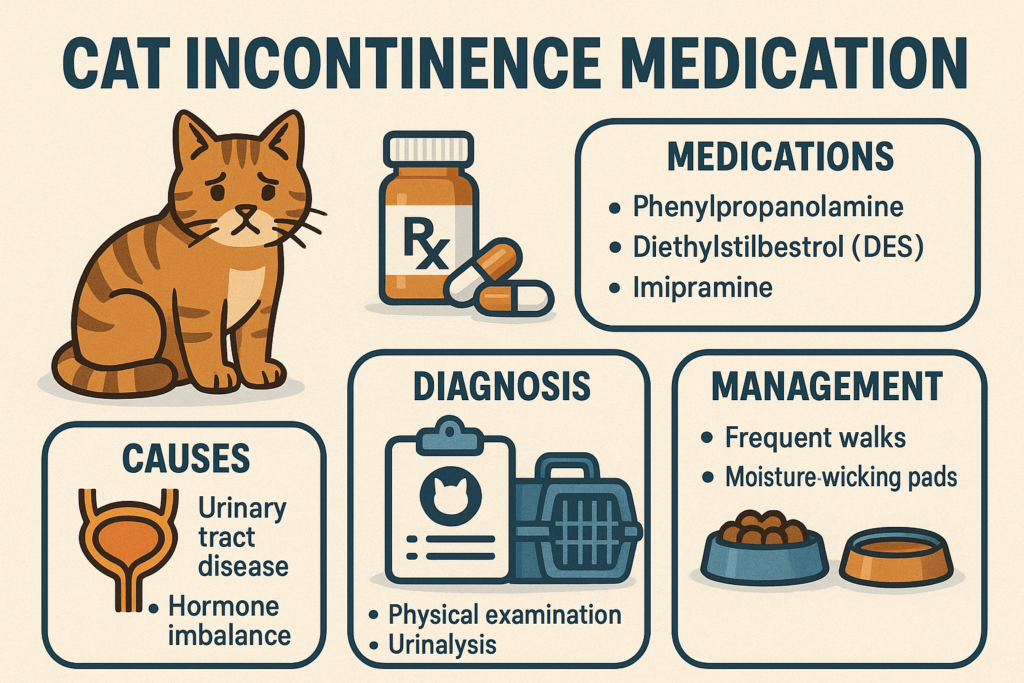
Types of Cat Incontinence Medication
Several medications are commonly used to treat cat incontinence, each targeting different aspects of the condition. Understanding these options can help you make informed decisions about your cat’s care.
Phenylpropanolamine (PPA):
PPA is often prescribed to strengthen the urethral sphincter, reducing accidental leaks in cats with weak bladder control.Antibiotics:
If a bacterial infection is causing incontinence, antibiotics are essential to eliminate the underlying issue.Hormone Supplements:
For spayed females, estrogen-based medications can restore hormonal balance and improve bladder function.Anti-Inflammatory Drugs:
These medications reduce swelling and irritation in the urinary tract, alleviating symptoms of incontinence.Muscle Relaxants:
In cases where bladder spasms contribute to incontinence, muscle relaxants can provide relief and improve control.
With the right medication, many cats experience significant improvement in their symptoms, allowing them to live comfortably again.
Medication Types for Cat Incontinence | Potential Side Effects to Monitor |
|---|---|
Phenylpropanolamine (PPA) | Increased thirst, restlessness |
Antibiotics | Gastrointestinal upset, diarrhea |
Hormone Supplements | Weight gain, lethargy |
Anti-Inflammatory Drugs | Vomiting, loss of appetite |
Muscle Relaxants | Drowsiness, difficulty walking |
Steps to Administer Cat Incontinence Medication Safely
Administering medication to your cat requires patience and precision. Follow these steps to ensure your cat receives their treatment safely and effectively.
Consult Your Veterinarian First:
Always get a professional diagnosis before starting any medication to confirm the correct dosage and type.Use Pill Pockets or Treats:
Hide pills in soft treats or pill pockets to make administration easier and less stressful for your cat.Crush Pills When Appropriate:
Some medications can be crushed and mixed with wet food, but check with your vet first to ensure it won’t affect efficacy.Create a Calm Environment:
Administer medication in a quiet space where your cat feels safe, reducing anxiety during the process.Reward Your Cat Afterward:
Offer praise, pets, or a favorite treat to create positive associations with taking medication.
By following these steps, you can minimize stress and ensure your cat receives the care they need without resistance.
Lifestyle Changes to Support Cat Incontinence Treatment
In addition to medication, certain lifestyle adjustments can complement treatment and improve your cat’s overall well-being.
Provide Frequent Bathroom Breaks:
Take your cat to their litter box more often to prevent accidents and encourage regular urination.Switch to High-Quality Food:
A balanced diet can promote urinary health and reduce the risk of bladder issues. Look for foods formulated for urinary support.Increase Water Intake:
Encourage hydration by providing fresh water or investing in a cat water fountain to stimulate drinking.Maintain a Stress-Free Environment:
Stress can exacerbate incontinence, so create a calm and predictable routine for your cat.Monitor Litter Box Habits:
Keep an eye on your cat’s bathroom behavior to detect any changes early and report them to your vet.
These lifestyle changes work hand-in-hand with medication to enhance your cat’s recovery and comfort.
Signs Your Cat May Have Incontinence
Recognizing the signs of incontinence early can make a significant difference in your cat’s treatment and recovery. Look out for these indicators that your cat may need medical attention.
Frequent Accidents Outside the Litter Box:
Involuntary urination in unusual places is a clear sign of potential incontinence.Excessive Licking of the Genital Area:
This behavior may indicate discomfort or irritation in the urinary tract.Strong-Smelling Urine:
Foul odors can signal an infection or other underlying issue contributing to incontinence.Blood in Urine:
Hematuria (blood in urine) is a serious symptom that requires immediate veterinary evaluation.Crying During Urination:
Vocalizing pain while using the litter box suggests discomfort or obstruction.
Identifying these signs promptly allows for timely intervention and better outcomes for your cat.
Preventative Measures for Cat Incontinence
Prevention is always better than cure when it comes to cat incontinence. Implementing these strategies can reduce the risk of developing this condition.
Schedule Regular Vet Check-Ups:
Routine exams help detect and address potential issues before they escalate.Encourage Hydration Daily:
Ensure your cat drinks enough water to maintain healthy kidney and bladder function.Choose Age-Appropriate Diets:
Senior cats benefit from diets specifically formulated to support aging urinary systems.Minimize Stressful Situations:
Avoid sudden changes in your cat’s environment to keep them calm and relaxed.Provide Accessible Litter Boxes:
Place multiple litter boxes around your home to make them easily accessible for your cat.
Taking preventative measures can safeguard your cat’s urinary health and reduce the likelihood of incontinence.
How to Comfort a Cat with Incontinence
Living with incontinence can be frustrating for cats, but there are ways to make them feel more comfortable and supported during this time.
Keep Their Bedding Clean:
Wash bedding frequently to prevent odors and maintain hygiene.Use Absorbent Mats or Pads:
Place waterproof pads in areas where your cat spends time to catch accidents.Offer Gentle Reassurance:
Spend extra time cuddling and comforting your cat to reinforce their sense of security.Avoid Punishment for Accidents:
Never scold your cat for accidents—they cannot control their condition and need understanding.Celebrate Small Improvements:
Acknowledge progress, no matter how minor, to stay motivated and positive throughout the journey.
By focusing on comfort and compassion, you can help your cat navigate incontinence with grace and ease.
Frequently Asked Questions About Cat Incontinence Medication
What should I do if my cat refuses to take medication?
Try disguising the pill in treats or using a pill dispenser designed for cats. Consult your vet for alternative options if needed.
How long does it take for cat incontinence medication to work?
Results vary depending on the medication and condition, but improvements are often seen within a few days to weeks.
Are there natural remedies for cat incontinence?
Some supplements, like cranberry extract, may support urinary health, but always consult your vet before trying alternatives.
Can incontinence be cured completely?
In some cases, yes—especially if caused by treatable conditions like infections. Chronic cases may require ongoing management.
What if my cat’s incontinence worsens despite medication?
Contact your veterinarian immediately to reassess the treatment plan and investigate further.
Empowering Your Cat’s Recovery from Incontinence
Managing cat incontinence may seem daunting at first, but with the right combination of medication, lifestyle adjustments, and veterinary guidance, you can help your feline friend regain their comfort and dignity. Remember, patience and consistency are key—your cat relies on your care and dedication to overcome this challenge. By staying informed and proactive, you can ensure your beloved pet enjoys a happy, healthy life free from the stress of incontinence.
Aspiration Pneumonia in Cats: Best 7 Expert Tips! Discover causes, symptoms, and treatment advice to protect your cat’s respiratory health and ensure a speedy recovery.
Wet Food for Pregnant Cats: Best 7 Expert Tips! Discover essential advice on feeding wet food to pregnant cats, ensuring proper nutrition for mom and kittens. Learn what to look for and how to care!
Why Does My Cat Bite My Other Cats Ear? Best 7 Expert Tips! Discover reasons behind this behavior, how to interpret it, and expert advice to ensure harmony in your multi-cat household.
Somali Tabby Cat: Best 7 Expert Tips! Discover expert advice on caring for a Somali tabby cat, from grooming and health to personality and fun facts. Perfect for cat lovers!

